Discover Highway Hi-Fi Podcast
Highway Hi-Fi Podcast

 Highway Hi-Fi Podcast
Highway Hi-Fi Podcast
Author: Ryan & Joe
Subscribed: 38Played: 762Subscribe
Share
© Copyright 2017 All rights reserved.
Description
We go track by track through the underbelly of music history using research and trivia to locate the roots of our obsession with vinyl records. Proud part of Pantheon - the podcast network for music lovers.
100 Episodes
Reverse
Today, we look at the albums and labels that were born to lose money. The artifacts of music industry mischief and copyright chicanery. So, go ahead and file an extension on your common sense. Declare the next hour or three a total loss and adjust your gross. Put your dependents to bed and audit yourself for a stiff drink. This is going to get taxing. Get ready for the write-off records. In this episode, tax scam labels.
Highway Hi-Fi is a proud member of the Pantheon Music Podcast Network - Home of the Finest Music Podcasts
Learn more about your ad choices. Visit megaphone.fm/adchoices
Animals and robots might seem like strange bedfellows for rock albums, but once you know what you’re looking for, they are hard to miss. There are hundreds of examples of bands who have piped in animal noises for any number of reasons: to provide atmosphere, as a story-song plot device, just to add some insanity, or possibly even something unseemly. Think of all the new-age fodder that relies on birdsongs, crickets, frogs, and tortured pig wails. Hasil Adkins, Lux Interior, Ray Stevens, and Raffi would all be out of work if they couldn’t sing animal noises - and were still alive. And of course, artist as robot is almost commonplace now, what with the non-humanoid success of acts like Kraftwerk, Devo, Man or Astroman, Servotron, Daft Punk, and Michael McDonald. Fauna and automatons in popular music surround us like we’re all riding our Tron motorcycles to Coachella during some post-apocalyptic doomscape.
But what lies beyond this casual relationship? What happens when bands relinquish some control of their aesthetic sound to orangutans and toasters or dugongs and doomsday devices? Are we breaking new ground or just finding yet another source of novelty? Or both. Over two episodes we will explore the merger of non-human caterwauling and popular music. How much of this is simply a gimmick and how much is a sincere exploration of music outside the influence of mankind? We will be returning to this topic in a later episode, where we tackle robot musicians, from player pianos to Terminators. But today, we will devolve to dance among the beasts.
So, tell Marlin Perkins to dust off that keytar, St Francis to open the cages, and David Attenborough to tickle himself some ivories. Get ready for thrillin’ reptilian. Amplified amphibians. Ambles of Mammals. When this ark gets to rockin’, be wary of knockin’. This petting zoo is going to get heavy. Today, non-human bands, part 1: the animal kingdom.
Highway Hi-Fi is a proud member of the Pantheon Music Podcast Network - Home of the Finest Music Podcasts
Learn more about your ad choices. Visit megaphone.fm/adchoices
On today’s episode, we’re casting our line out as far as we can to reel in a history of a music style that is as expansive, deep, majestic, and mysterious as the oceans themselves. Be ready for thrills to your gills and grins to your fins! It’s time to get your snorkel and flippers out of storage and your lures and bobbers out of the tackle box and join us as we flush ourselves into the fresh and damp world of underwater music.
Highway Hi-Fi is a proud member of the Pantheon Music Podcast Network - Home of the Finest Music Podcasts
Learn more about your ad choices. Visit megaphone.fm/adchoices
We hope to be back with a fresh batch of episodes very soon!
Highway Hi-Fi is a proud member of the Pantheon Music Podcast Network - Home of the Finest Music Podcasts
Learn more about your ad choices. Visit megaphone.fm/adchoices
In today's episode, we take a break from taking breaks and present a mix of sounds and music to unnerve you.
Highway Hi-Fi is a proud member of the Pantheon Music Podcast Network - Home of the Finest Music Podcasts
Learn more about your ad choices. Visit megaphone.fm/adchoices
From 1963 to 1967 hundreds of songs about the Beatles, but not by the Beatles, were issued by no-name artists on tiny fly-by-night labels. An unimaginable amount of these mop top dedications were simply trying to scrape the bottom of the barrel of Beatlemania Bucks. And while the whole band received an unending amount of adulation from the masses of music makers, one member had an almost metaphysical magnetism for bad musicians: Mr. Ringo Starr.
In this episode, we are going to explore America’s Jingoism for Ringoism. The ladies who love the goofball percussionist and the men who love to hate him. Odes to the drummer who is better than the best. Or at least better than Pete Best. And the scores of singers who can’t possibly imagine a better subject matter than those shaggy locks and that Gomer Pyle grin. Listening to this music...it don't come easy. But we’re going to brave the bewildering and backbreaking Beatlemania Bacchanalia to bring you a bounty of the best bedeviling Beatle bauble by bewitched Beatle buffs. In this episode, Ringo Songs.
Highway Hi-Fi is a proud member of the Pantheon Music Podcast Network - Home of the Finest Music Podcasts
Learn more about your ad choices. Visit megaphone.fm/adchoices
In this episode, we track the legacy of the music of the grittiest of film styles. Scores of scores that are riddled with bullet holes, whiskey bottles, scattered cards, wanted posters, and bloodstains. Tunes that put a bounty on your mind and will ride you down in the desert. So, saddle up your pony and load your six-gun. Down that bottle and kiss your senoritas farewell, Prepare yourself for double-crosses, and double-double-crosses. Get another coffin ready. Today, we’re gunning down the history of Spaghetti Western Music.
Highway Hi-Fi is a proud member of the Pantheon Music Podcast Network - Home of the Finest Music Podcasts
Learn more about your ad choices. Visit megaphone.fm/adchoices
Nobody intentionally builds cathedrals to mediocrity. Music criticism, and really society in general, is often preoccupied with defining, declaring, and debating superlatives by using any means at their disposal, subjective to scientific. Look at the vast array of books, articles, lists, blog posts, and podcasts dedicated to rock’s most important bands or the world’s greatest albums, or the first true trip-hop song, or even the musician with the most substantial mustache. We seemingly have a compulsive need to declare a winner. To pin an imaginary medal for a make-believe achievement of unquantifiable greatness.
What we rarely do is look to the opposite side of the bell curve. To the outliers at the bottom, that is equally rare as their counterpoints at the apex, but not nearly given as much consideration for how unique they truly are. Those who stand out because of their outstanding failure and shortcomings. The best of the worst. The dregs of the entertainment community.
In this episode, we are going to explore the pop stars who found fans in spite of (or perhaps because of) their gross musical incompetence and who were demonstratively aesthetically just plain bad. The small handful of musicians who would be, under all circumstances, considered conventionally terrible at music yet manage to attain success. Those who through sheer will or perhaps complete ignorance managed to make a name for themselves. And those who were exploited, mocked, and enjoyed ironically but still fought to the top.
We seek to understand first what the motive is behind their drive? Were they sincere? Delusional? We’re they okay being a novelty and laughing along with their hecklers? Did they even know it was happening? Or did they just want to cash in by any means at their disposal? And secondly, we explore the motive of their audience. Did these people truly enjoy these exhibitions of atrocity much like watching a train wreck? Or did they get off on holding this secret over an oblivious performer? And finally what sort of unhealthy dynamic is formed from the strange relationship of the two.
Highway Hi-Fi is a proud member of the Pantheon Music Podcast Network - Home of the Finest Music Podcasts
Learn more about your ad choices. Visit megaphone.fm/adchoices
Bagpipes are a sonorous and ceaseless instrument. Almost comically so. The traditional Scottish Bagpipe is the loudest unamplified instrument known to man. Decibel levels range upwards of 110, which puts them far closer to thunderclaps and power tools than pianos and oboes. And if the deafening sound doesn’t get you, then the constancy of its noise certainly will. The chanter of a bagpipe is open, which means that once a piper has used the blow stick to fill the bag, the instrument cannot (and will not) be silenced until all the air is released. The spectacular implacable multi-dimensional soundscapes made by a stand of pipes are typically more unleashed than controlled. In fact, it requires technical playing to create an allusion of articulation and tone accents. In essence, the player bends to the will of the instrument, not the other way around...its the anti-Theremin. As James Reid, Bill Millin, and John Cale can all attest, the bagpipe is a fierce musical weapon. The power seems to be a tempting inclusion to engorge the depths of songcraft, yet, there have been so few popular musical artists who have attempted to integrate bagpipes into their songs. Even fewer used bagpipes on a regular basis.
In today’s episode, we are going to explore the tenuous relationship between the sack and the song. To find the brave souls who marched into the mainstream with nothing but pipes, pride, provocations, and piercing pandemonium. We are going to lift the kilt on one of the world’s most maligned and misunderstood music-makers. So, take a deep breath and blow as hard as you can, squeeze your bag tightly, finger your chanter nimbly, and don’t stop until you or your audience passes out….because we are startin’ to tartan. Today, bagpipes in popular music.
Highway Hi-Fi is a proud member of the Pantheon Music Podcast Network - Home of the Finest Music Podcasts
Learn more about your ad choices. Visit megaphone.fm/adchoices
It’s that time of year again, where we get pretty sick of hearing about Christmas. For this, unbelievably, our fourth Christmas episode we are going to carry on the tradition of taking an episode to talk about some of the weirder, smaller stories that we’ve wanted to cover, but wouldn’t fit in with a full-length turntable talk. A veritable cornucopia of record oddities. So, sit back and get ready to have your stockings stuffed with some fascinating tales of rock star mishaps and vinyl vanities. Stoke your fire, spike your eggnog, and don your winter’s cap, cause you’re about to be visited by the ghost of music history’s past.
In this episode, we have stories about Adriano Celentano, Eduard Khil, Halyx, Computer Data on Vinyl, Dr. Arthur Lintgen, and Gary S. Paxton. Join us, won't you?
Highway Hi-Fi is a proud member of the Pantheon Music Podcast Network - Home of the Finest Music Podcasts
Learn more about your ad choices. Visit megaphone.fm/adchoices
In the early 20th century, a puppet fervor slowly crept across the America, like rust on a Chevy Nova, as travelling shows made puppeteers into full fledge celebrities, particularly the self-proclaimed “America’s Puppet Master” Tony Sarg who was instrumental in creating visually appealing versions of classic children’s tales and bringing to life puppets in live action and animated films. Concurrently, ventriloquism acts were breaking from music halls and vaudeville shows to find superstardom led by duos of Arthur Prince and Sailor Jimmy, the Great Lester and Frank Byron Jr., and, of course, Edgar Bergen and Charlie McCarthy. America got wood for talking wood.
The rise of radio, television, and film provided even broader platforms for puppeteers and ventriloquists to spread their infectious amusements. In a world before special effects, making inanimate objects come alive felt magical and more real than still nascent animation. It was children’s television that really embraced puppets as Howdy Doody and Burr Tillstrom's Kukla and Ollie were beamed directly into the impressionable minds of the baby boomers. Lambchop lovin’ Shari Lewis, sweater-clad Fred Rogers, and googly eyed Jim Henson all followed suit shortly after making themselves and their creations into international superstars.
At about the same nuclear age time frame, you couldn’t throw a stone without hitting a socially awkward (and probably sexually frustrated) kid unsuccessfully practicing throwing his voice with a shiny new Emmett Kelly or Mortimer Snerd dummy emulating their heroes like Jimmy Nelson, Bil Baird, and Paul Winchell. They would spend hours listening to instructional records on letter substitutions and tongue positioning. The craze permeated far and wide as even Miss America contestants chose ventriloquism for the talent portion of the show. We even got so lazy that we decided to let robots run our puppets as animatronics started popping up all over place like Disneyland, Showbiz Pizza, and Chuck E Cheese.
In this episode, we are going to stare into the cold dead eyes of the dummies. We are going to explore why and how adults mimicking mannerisms into lifeless masses became the preeminent evangelical apparatus. And how things went so far off the rails. So, dim the lights and focus the spotlight. Put on your duck tail tuxedo. Tip your top hat jauntily askew. Straighten your bowtie. Stick your hand up the bottom of your favorite inanimate object and throw your voice as far it goes. Join as we walk through the uncanny valley of the dolls. Just don’t let us see your lips move. Today, the wacky world of puppet records, you dummies.
Highway Hi-Fi is a proud member of the Pantheon Music Podcast Network - Home of the Finest Music Podcasts
Learn more about your ad choices. Visit megaphone.fm/adchoices
Almost as long as humans have mastered the ability to record the environment around them, they have desired to record the world that is just beyond them. A perfectly logical endeavour, as all recorded music is somewhat supernatural, especially when cocaine and LSD are involved. Recorded sound is by its very nature taken from another place, a distant place, and thrust into a moment where it doesn’t belong and couldn’t exist without human manipulation. The technology that unlocks these past dimensions surely mustn't stop there...what other realms can be explored.
In this episode we explore the sounds of the occult and occultists.
Highway Hi-Fi is a proud member of the Pantheon Music Podcast Network - Home of the Finest Music Podcasts
Learn more about your ad choices. Visit megaphone.fm/adchoices
In this episode we look at how graphic novels are pushing the boundaries of pop music history, bringing new perspectives and fans. Where life imitating art is just as possible as art imitating life. How like the inked pages themselves, the books color their stories to accentuate their ideas and themes. Lighter, darker, more intense, more fanciful, more realistic, more fantastical. Entire biographies or genres are carefully condensed into imaginative visions. Adaptations that leave lasting impressions that are not necessarily bound by what is real. So move back in your mother’s basement, fire up the Batmobile, and bring out the shoebox of old Zippy the Pinhead comics. In this episode, we explore the symbiotic relationship between music history myth-building and graphic novels.
Highway Hi-Fi is a proud member of the Pantheon Music Podcast Network - Home of the Finest Music Podcasts
Learn more about your ad choices. Visit megaphone.fm/adchoices
As radio, and eventually television, became a fixture in American homes, a celebrity culture was solidified. With this fascination for the people that we hear and see almost daily, there was a longing to understand them. A striving for connection that lets people feel like they really know who this star is and maybe, one day, that star could know who they really are as well. These conditions of idol worship created a lucrative playing field for companies to draw upon the status of fame to sell their goods. Beyond the normal response that music can invoke in listeners, the draw was much stronger if the message came from a recognized, trusted, and desirable source. Today, we explore the literal commercialization of rock music.
Highway Hi-Fi is a proud member of the Pantheon Music Podcast Network - Home of the Finest Music Podcasts
Learn more about your ad choices. Visit megaphone.fm/adchoices
Night Bus, Late Night Grocery Run, & Pink Motel are microgenres that represent their own experiential sound, where the songs are held together by the atmospheres they invoke rather than a specific set of rules or location in time and space. The music, primarily captured on singles, was created by private press or no name labels with dreams of making it big or at least making a few bucks. The mood of these micro-genres provides a faded snapshot of the 1980s with a depraved combination of the excess and frivolity of popular styles of the time: RnB, disco, funk, AOR, and synthpop.
Our episode today is being co-hosted by two cosmonauts of musical taxonomy, Candace and Micah, who launch themselves into the darkest recesses of the musical spectrum and bring back the fragments of unremembered sounds out of the oblivion. They explore musical trends that are mostly forgotten or intentionally pushed away from mass society for its own protection. They have worked diligently to find homes for the “square peg” music that certainly exists, but is, as of yet, unrecognized as a cohesive micro-genre. Music that is little known outside of the basement dwelling record trolls plastered to their discogs, mixclouds, and youtubes.
Listen to Micah's show on WFMU, Music of Mind Control
Archives for WFMU shows hosted by Micah & Candace: Night Bus & Low Rent Grooves/Pink Motel
Highway Hi-Fi is a proud member of the Pantheon Music Podcast Network - Home of the Finest Music Podcasts
Learn more about your ad choices. Visit megaphone.fm/adchoices
There is an unproductive trope of there being a fine line between genius and madman. Constantly, we are encouraged to believe that the works of “artists in asylums” are somehow this perpetual motion machine where mental illness fuels creativity which, in turn, fractures the creator even more creating a cycle toward an inevitable dark end, where we are only left with the work to scrutinize or admire. The truth is a lot less dramatic, but no less sad. Social circumstances, interpersonal relationships, biology, substances, and societal expectations each play relevant roles in determining the well-being of every person: artist, genius, or just the poor soul sleeping on the street. Art and artist are separate. Just as a mental condition and person are separate. Influenced and interlaced, certainly, but we so often forget that works do not define the person, rather the person defines the work.
Many of us are captivated by albums that were created while the artists were in mental hospitals. They are rare artifacts that unfortunately end up defining the artist for their careers while giving an undue amount of weight to the condition of their mind rather than the beauty within it. The artistry that comes from the pain and confusion of confinement . . . in a hospital and in one’s mind. The records are snapshots of musicians on the brink that utilized songs to communicate their struggle or alleviate suffering. Today, we are exploring Institutional Albums by Roky Erickson, Skip Spence, and Danial Johnston.
Sources used for this episode include:
13th Floor Elevators: A Visual History by Paul Drummond
Eye Mind: The Saga of Roky Erickson and the 13th Floor Elevators, The Pioneers of Psychedelic Sound by Paul Drummond
Highway Hi-Fi is a proud member of the Pantheon Music Podcast Network - Home of the Finest Music Podcasts
Learn more about your ad choices. Visit megaphone.fm/adchoices
There is a long history of the unjust treatment of women musicians whose contributions were often overlooked, dismissed, or stolen. Sadly, it’s likely to be a long future as well. This is on the top of the extra effort and persistence that it took to establish themselves in a sexist business that is stacked against female creators and performers. In particular, the development of experimental and electronic music has been established on the skills of a number of women artists who made monumental and transformative contributions to forward-thinking, technology-minded music. Unfortunately, many of these artists remain far too obscure for their importance in progressing the genre. This episode is an examination of the unsung women who shaped the sounds during the formative years of electronic music.
Highway Hi-Fi is a proud member of the Pantheon Music Podcast Network - Home of the Finest Music Podcasts
Learn more about your ad choices. Visit megaphone.fm/adchoices
Ween set forth on a career-long ambition to tear down standard music industry conventions by hook or by crook. To take that which is weird, obnoxious, and unclean, and show it as important as the falsely pristine parts of life. They were never more successful in this endeavor than on their 76 minute slog of a second record, The Pod. Recorded alone together in Dean and Gene Ween’s apartment that was a converted barn smack dab in the middle of a horse field while both were suffering through mono and high on, well, probably everything. The record sounds like you need to scrape off layers and layers of shit and grime to get the pop tunes hidden within. Underneath the juvenile jokes, the impressive assemblage of vulgarity, fast food orders, molasses-dipped song-smithing, sonic fuckery, squishy atmosphere, and overall friendly misanthropic posturing is a solid and comprehensive American pop music revue. Dinner theater at the slaughterhouse.
So, tonight’s offering...another scoop of isolation but this time with a heaping of flies, scotch guard, and glandular fever. If you’ve ever woken up and found that someone had taken a deuce on your kitchen floor, you’ve already sort of heard this masterpiece. The sludgiest, brownest record of Ween’s illustrious decades long trouncing of indie music. Come on, it's a beautiful night for a walk on the beach, wouldn't you say?
Listen to Fewer Owls, mentioned in this episode!
Highway Hi-Fi is a proud member of the Pantheon Music Podcast Network - Home of the Finest Music Podcasts
Learn more about your ad choices. Visit megaphone.fm/adchoices
Today’s episode is a continuing examination of the strange bedfellows of cults and music. Last time, we discussed some of the more academic reasons why leaders and their minions utilize music to recruit, indoctrinate, isolate, and elevate their group, so today we are going to dive right into the fringiest of the fringe groups. The absurd ashrams. The Kookiest communes. The flakiest faiths. The goofiest gurus. The screwiest sects. And the zaniest zealots. So go ahead and plaster your best “Up with People” smile on that face, schedule tomorrow’s deprogramming session, and hunker in your bunker as we prepare to astrally project the second installment of the fascinating world of cult music.
One of the main resources we used for this episode was WFMU's Music of Mind Control with Micah
Highway Hi-Fi is a proud member of the Pantheon Music Podcast Network - Home of the Finest Music Podcasts
Learn more about your ad choices. Visit megaphone.fm/adchoices
Cults can manifest themselves in any number of ways. They deal in the currency of human beliefs….religious, political, racist, or terroristic beliefs. And can be delivered in the form of a prophesying doomsday, increasing human potential, or enhancing one’s position using new age techniques, black magic, crystal skulls, anything on Gwyneth Paltrow’s website, or other supernatural means. And while it can be difficult to know exactly when a group is truly a cult, they tend to share three things: a charismatic, often authoritative leader; an indoctrination program into a transcendent belief system; and a system of control through exploitation.
These self-styled leaders prey upon the most malleable members of society. Generally, those are the most stable and predictable of us. Cults use varying means of conditioning and thought reform through deception, isolation, dependency, and fear. One of the more fascinating tools in their horrible toolbox of manipulation is the use of music. As with the case of Bixby and DeGraff, there is a strange balance and codependency of music and mind control. Music is consistently seen playing a role in the establishment and functioning of cults, radical sects, and new religious movements. It can not only bring people together, it can also bring people into the fold.
In this episode, we delve into the bizarre world of music made from within cults. Tunes that were left behind as relics of evidence of exploitation and excessive, destructive devotion. Results that are so strange because they were almost certainly weaponized by a brainwashed minion. Music that is created in a vacuum of narcissism, removed from free thought and outside influence. Hymns to self-appointed prophets, saviors, divine conduits, Christ reincarnates, gurus, faith healers, alien leaders, and Sting (probably). We will look at music from some of the world’s most infamous cults as well as the songs that are so insular, they make no sense outside of their context, even when that context makes no sense either. So, cleanse off your chakra, open your mind, pull on your robes, lace up your Nikes. Today, the music of the cults. Join us, won’t you? Forever?
One of the main resources we used for this episode was WFMU's Music of Mind Control with Micah
Highway Hi-Fi is a proud member of the Pantheon Music Podcast Network - Home of the Finest Music Podcasts
Learn more about your ad choices. Visit megaphone.fm/adchoices


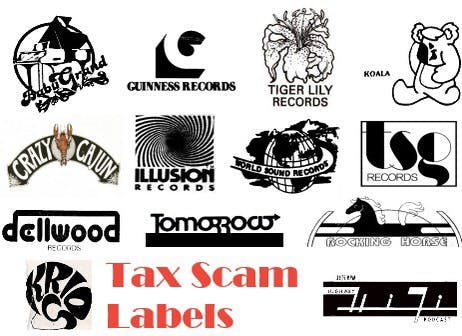
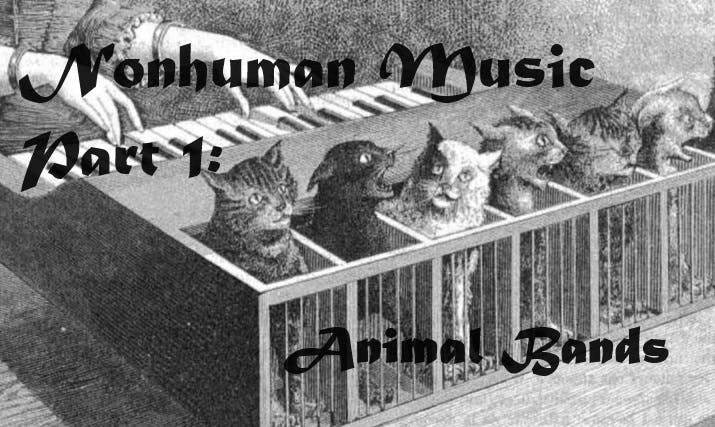

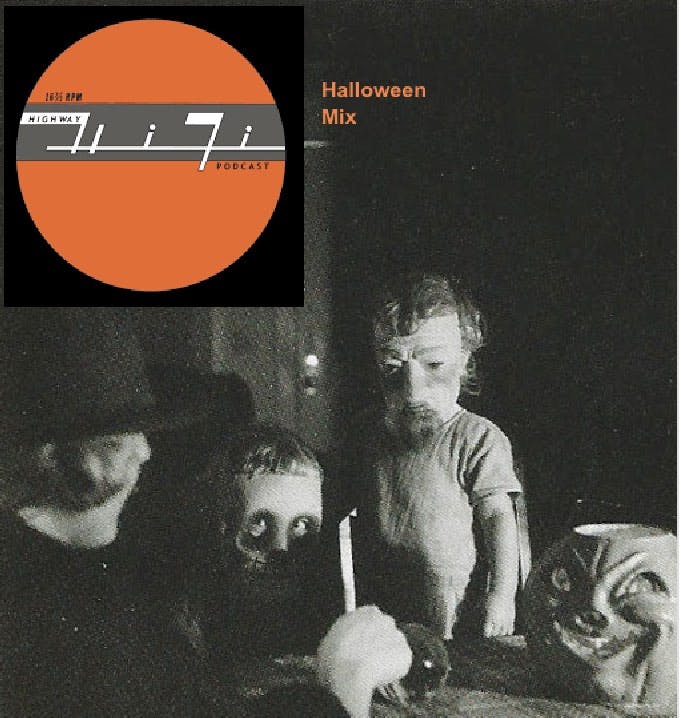

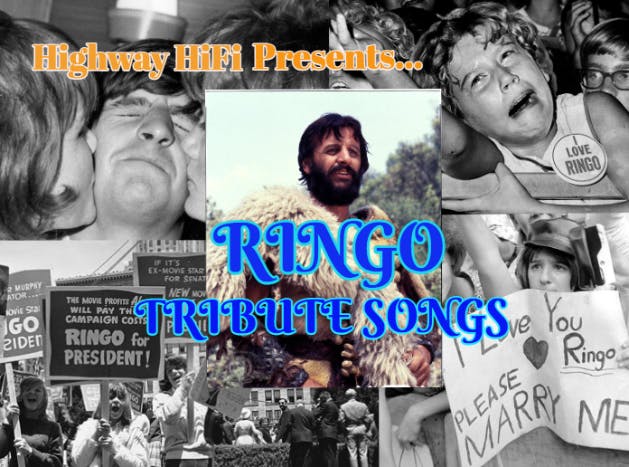
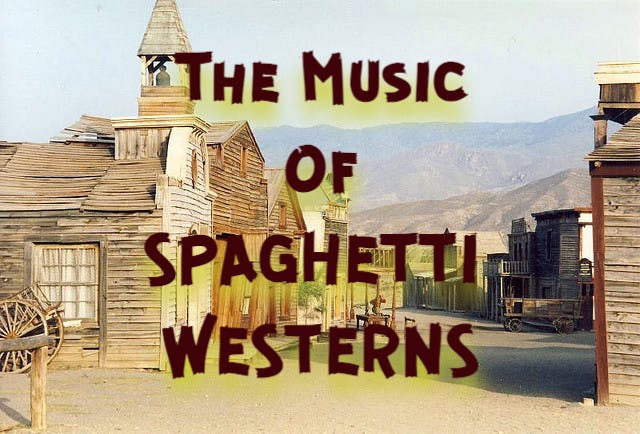
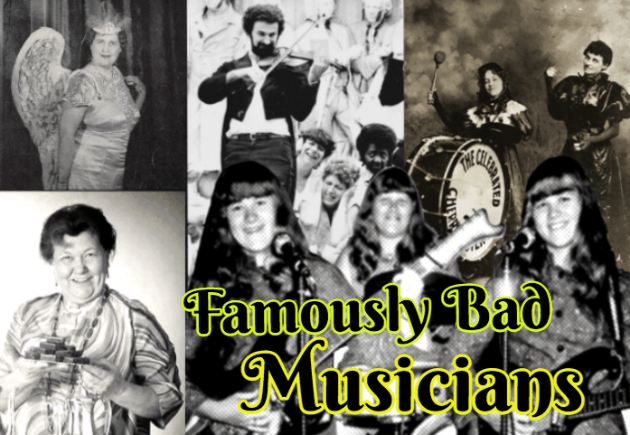
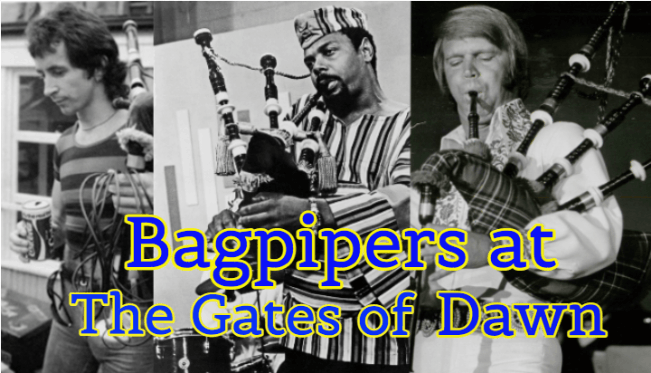



can't seem to find Mellow Groover Easy Ride anywhere on the Net...